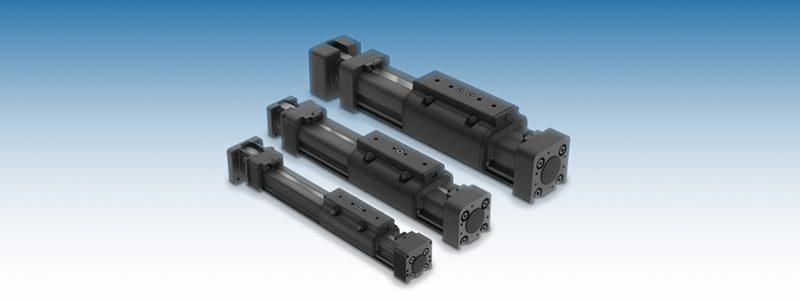Technology seems to be improving each day without hesitation. The same goes for every type of industry, where the experts try to make all the manual labor simplified.
When it comes to linear motion, today you can find linear actuators and shafts on almost every page that sells tools. But should you rush into such a decision?
The answer is ‘definitely not’ and that’s why, we’ve taken some time to explain all the details buyers should be aware of before making a purchase.
What are linear actuators and what do they do?
Linear actuators are definitely not something new, as they have been invented over a 100 years ago. The name actuators derives from the fact that those little instruments serve to ‘actuate’ linear motion or motion in general.
Before they were automated and modernized, the actuators were handled manually.
Linear actuators are present in every mechanism that requires opening or closing, pushing and pulling or even lifting and dropping.
The actuator that is most commonly used in everyday life is a solenoid actuator that is used to lock and unlock most cars and an electric linear actuator that is used to open and close the trunk in your car.
Another example of an everyday linear actuator is the one that makes heating in a car possible. In this case, actuators control the airflow position and the temperature setting.
Basically, a linear actuator is a device that transforms rotational motion of an AC or DC motor into linear motion by pushing or pulling.
Objects can be lifted, dropped, adjusted, tilted, pushed and pulled by this movement.
They are completely safe to use and allow the operator to handle them with full control. In addition, they are cost efficient as well as preserve energy and have a long lifetime with little to none maintenance.
What are linear shafts?
Linear shafts are widely used when sliding motion is required. They also help to achieve smooth, guided and fine-tuned motion.
The size and precision of the linear shaft (https://www.tuli-shop.com/linear-motion-products/linear-bushing-and-shafts) is determined by the weight of the loads and motion requirements.
While looking for a right linear shaft for your needs, you might’ve come to a term ‘posts’ and ‘rotary shafts’ as well. All these items are used to control a certain type of motion or a combination of more types of motion.
Posts and rotary shafts are used when rotary motion is required or a combination of rotary and linear motion. Which means that the right type of shaft depends on the motion needs that are present in your project.
Linear shaft is an extended rod shaped tool that provides linear motion while transmitting power.
Some are mounted on an axial, and some on a radial construction, depending on the shape of a hole at the end of the device.
The maximum load they can bear is determined by the precision requirements and the shafts size.
Opposed to linear shafts, the linear bushings are ball based linear motion actuators which provide best results when combined with the cylindrical linear shaft. In this case, linear motion is provided with minimal friction resistance and brings the most accurate results.
Linear motion also known as rectilinear motion
Referred to as a general type of motion, linear motion is a one-dimensional motion in the straight line, also considered the most basic of all types of motions.
Objects that don’t experience any net force continue to move in a straight line equally fast until they meet a certain net force, according to Newton’s first law.
There are two different types of a simple linear motion, depending on the motion path - a rectilinear and a curvilinear motion. As their names say - the first one makes objects move in a straight line, while the curvilinear ensures motion in a curved line.
An object can move at a constant speed achieving no acceleration. This performance is known as the uniform linear motion. The opposite is a non-uniform linear type of motion, where objects travel at a different speed and easily achieve acceleration.
In any case, before linear motion is achieved, the force must be used.
Linear motion is achieved when the force goes through the center of mass of the object, which makes it move in a straight line.
Tips to achieve most precise linear motion
Engineers agree on one thing, when it comes to achieving precision in this line of work. No matter how sophisticated your equipment is, it can still be hard to achieve precise linear motion.
Of course, if you have mechanical components specifically designed for the application in question, precision is the least of your worries.
Even some environments can make it challenging to achieve precise results. Which brings us to the conclusion that there are certain factors that need to be considered beforehand.
Precision is defined as a combination of accuracy and repeatability.
Accuracy is best achieved if the desired accomplishments are defined. Otherwise, you might end up overpaying the tools and complicating the work that needs to be done.
Repeatability measures how able is the system to achieve a main position when ascertained from either of the directions. Accuracy is defined by travel path and positioning.
Other than travel path, precise positioning of the object, experts also advise to take weight of the load under consideration.
Hopefully we’ve managed to simplify the concept of linear motion and all the tools that make it possible. To find the best gadgets for linear and other types of motion as well, visit the best equipped online tool shop called Tuli.hr (https://www.tuli-shop.com/linear-motion-products).
A solution to every one of your needs, all in one place with outstanding customer support to answer all your questions and the best prices on the market.






 StableDiffusion
StableDiffusion Photo by
Photo by  Photo by
Photo by 
 full parking
StableDiffusion
full parking
StableDiffusion









